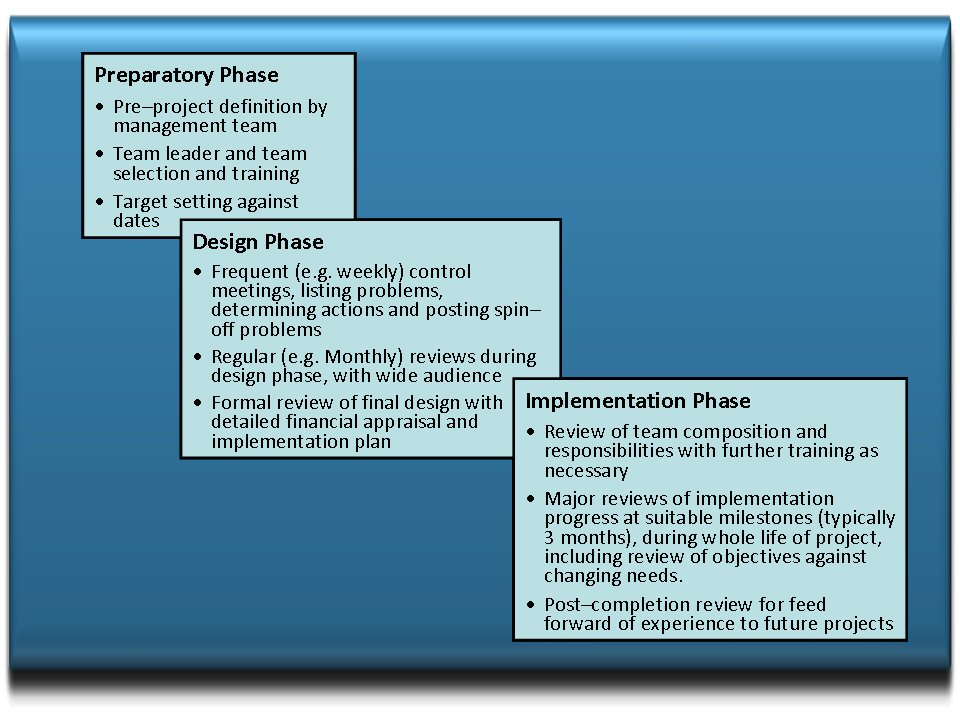2.07 - Project Management
Project Management
- Creating change and developing something new is always difficult and requires resources.
- Those involved must follow good practice in Project Management.
- Project Management is a senior management function that provides an appropriate environment, as is leadership and control of project resources and activities.
- All projects contain risk which should be recognised in estimates, plans, appraisals and control decisions. (See guide
2.14)
Communications in Project Management
- Those involved in change should be given the opportunity to understand why it is necessary and how it will affect them.
- Good communication is important both within the team and between the team and others.
- Responsibilities and procedures for communications should be defined and made known to everyone.
- Use more than one means of communication and audit their effectiveness from time to time.
Project Definition
A project must be clearly defined with firm objectives and terms of reference (TOR) that set out what is and what is not within the scope of work.
Terms of reference apply equally well to a whole project, phases, activities, and tasks. Each work package should also have terms of reference.
One popular method of writing TOR is to use the BOSCARDE outlined below:-
- Background – A bit of history / how did we get here
- Objectives – Why are we doing this? Expected results – measures etc.
- Scope – What’s in / what’s out
- Constraints – Cash / Time / materials etc
- Assumptions – What we agreed / givens
- Reporting – Who needs to know what and when
- Deliverables – What we have got to produce
- Estimates – Timing plan / Budgets / Costs
Project Organisation
All projects require an Owner and a Manager (or Team Leader). The Owner is a senior manager, normally a part time role, who allocates resources, steers the project and provides links to the business. The Manager, normally a full time role, is responsible for all aspects of the project and for controlling resources and activities to meet the project objectives. Able people are required for project management roles giving excellent career broadening experience. The project manager controls the agreed budget and buys resources with it.
Team Work
Multi-disciplinary teamwork is essential, as are team building and training. Large or complex projects need some full time members. Very large projects can be sub divided into smaller ones each with its own leader and multi-disciplinary team. The project manager then works through a controlling team that includes the leader of each sub-project.
Planning and Control
Every activity must be someone’s responsibility. Plans include soft (e.g. recruitment) as well as hard activities with time targets. Activities should be divided into units which have measurable outputs so that progress can be monitored. Control has to include current forecasts to completion.
Project Records
Good records should be kept, with the project manager holding the master files. A handbook should be given over to operation staff on completion to define both the facility and operating features.
Business Control
All projects are part of the business development plan and must be overseen by the business team. In addition, a cross-function senior management Quality Council should meet regularly to review the management of change / innovation, the project management process and to deal with spin-off problems and agree priorities.
Project Profile

Note: - Where there are many projects it is important to define the overall management logistics (i.e. who reviews priorities, sets targets and reports ensuring a business view is taken).
Typical Projects
These guidelines apply equally well to most types of project, including:-
- New Product and / or process development
- Business Change Projects
- New Facilities and / or infrastructure